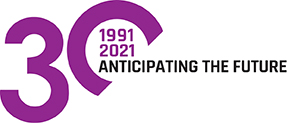- Home
- POINT OF VIEWS
Stepping into the future without shakeouts
Paolo Alzalamira
R&D and Technical Manager at Dos&Donts

In the increasingly digital and interconnected era, companies are facing a crucial challenge: how to remain
competitive and up to date without compromising economic and operational stability. Often, the need to
adapt to new technologies and connectivity standards clashes with the reality of existing machinery, which
may be expensive to replace or difficult to modify.
The Importance of Business Connectivity
Business connectivity has become a cornerstone for success in an increasingly interconnected world. From remote management of machinery to real-time data collection and analysis, modernized enterprises benefit from their ability to quickly adapt to technological changes. However, when it comes to implementing advanced connectivity solutions, many companies are confronted with harsh economic and logistical realities.
A Solution: Retrofitting and Revamping
To overcome this challenge, many companies are embracing the approach of retrofitting and revamping.
These two strategies allow for updating and improving existing systems without the need for complete
replacement. But what exactly do these two concepts mean?
Retrofitting is the process of integrating new technologies or functionalities into an existing system. This
approach allows companies to maintain the basic structure of their machinery, saving on replacement costs
and minimizing downtime. For example, it's possible to add monitoring sensors or connectivity modules to
existing machinery to make them compatible with Industry 4.0 requirements.
Revamping, on the other hand, goes beyond retrofitting. It involves a complete overhaul of a system,
enhancing its performance, efficiency, and lifespan. This could include upgrading key components,
implementing new technologies, or optimizing processes. An example could be installing new advanced
control software or optimizing the production chain to reduce waste.
Advantages of Retrofitting and Revamping
- Cost Reduction: The most obvious advantage of retrofitting and revamping is the significant cost reduction compared to complete system replacement. This is particularly crucial when companies need to balance the need for innovation with limited financial resources.
- Downtime Minimization: Compared to complete replacement, retrofitting and revamping generally require less downtime. This means companies can continue their production with minimal impact on daily operations.
- Sustainability Improvement: Sustainability has become an increasingly relevant concern for businesses. Updating and optimizing existing systems rather than replacing them helps reduce the environmental impact associated with production and disposal of old equipment.
- Continuous Adaptability: Retrofitting and revamping allow companies to remain flexible and adaptable to new market needs without facing drastic changes. This is particularly advantageous in industries where technology evolves rapidly.
Despite the numerous advantages, retrofitting and revamping also present some challenges. Addressing these challenges is essential to ensure the success of such projects and maximize their benefits:
- Component Compatibility: One of the main challenges is ensuring the full compatibility of new components with existing ones. This requires accurate assessment of the old infrastructure and careful planning to avoid conflicts and ensure seamless integration.
- Interoperability: In the case of complex systems, interoperability between new and old components can be an issue. Ensuring that all devices and software work together harmoniously requires careful design and implementation of clear communication standards.
- Adequate Planning: Retrofitting and revamping, as mentioned earlier, minimize downtime but this requires precise planning. Inadequate planning could lead to production delays and subsequent financial losses.
- Long-term Cost Evaluation: Although retrofitting and revamping are often cheaper than complete replacement, it's essential to carefully evaluate long-term costs. This includes not only initial costs but also those associated with ongoing maintenance and any future upgrades.
- Risk Assessment: Every retrofitting and revamping project involves risks. Identifying and evaluating these risks in advance allows for the development of mitigation strategies and the addressing of any unforeseen events more promptly.
- Adaptability to Future Needs: Since business needs can evolve over time, it's important to implement retrofitting and revamping solutions that are flexible enough to adapt to future innovations without requiring further substantial changes.
Ultimately, if managed carefully, retrofitting and revamping strategies allow companies to embrace innovation without compromising operational and economic stability. These approaches not only address current technological challenges but also prepare businesses to successfully adapt to an ever-evolving business landscape.
The balance between innovation and sustainability thus becomes a crucial element for the long-term success of companies: aware of this, Dos&Donts positions itself as a pioneer in offering advanced solutions, designed specifically to enable companies to embrace innovation without compromising operational and economic stability.
Dos&Donts Sigma Cloud: Transforming Connectivity into a Real Asset
Our Sigma Cloud platform is the beating heart of intelligent connectivity. Acting as a bridge between legacy systems and the Internet 4.0 ecosystem, Sigma Cloud enables companies to easily adopt new technologies and functionalities, ensuring a seamless upgrade. Thanks to this cloud-based solution, we offer an effective implementation of retrofitting, improving connectivity and enabling remote management of existing machinery. The strength of our proposal lies in the ability to provide tailor-made solutions, designed to meet the specific needs of each client. Whether it's new hardware interfaces or software customizations, Dos&Donts offers solutions that seamlessly integrate with existing machinery, enabling a smooth transition to Industry 4.0.
We understand the importance of interoperability in integrating legacy systems with new technologies. Our solutions are designed with open standards and clear communication protocols, ensuring smooth interaction between old and new components. We minimize the risks of conflicts and compatibility issues, ensuring a seamless implementation of retrofitting and revamping.
With our innovative solutions, Dos&Donts can be the ideal partner for companies eager to adopt Industry 4.0: through the combination of Sigma Cloud and customized solutions, we offer a practical path to embrace innovation sustainably and adaptably to the changing market demands.





